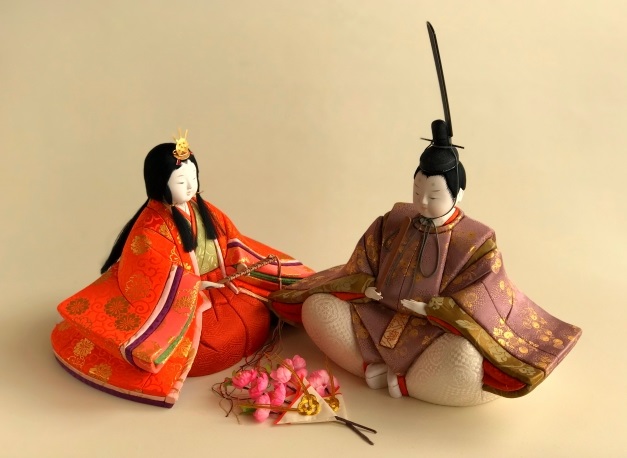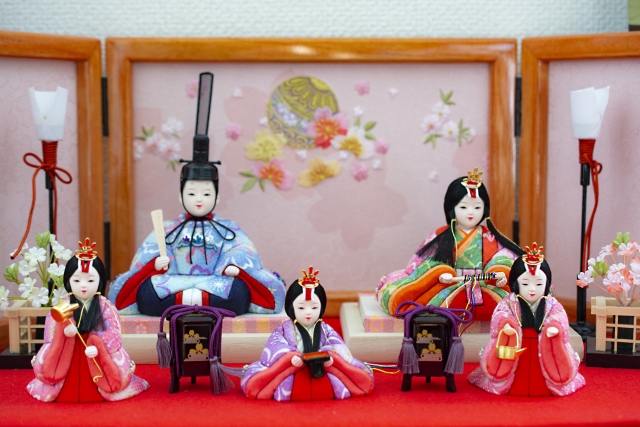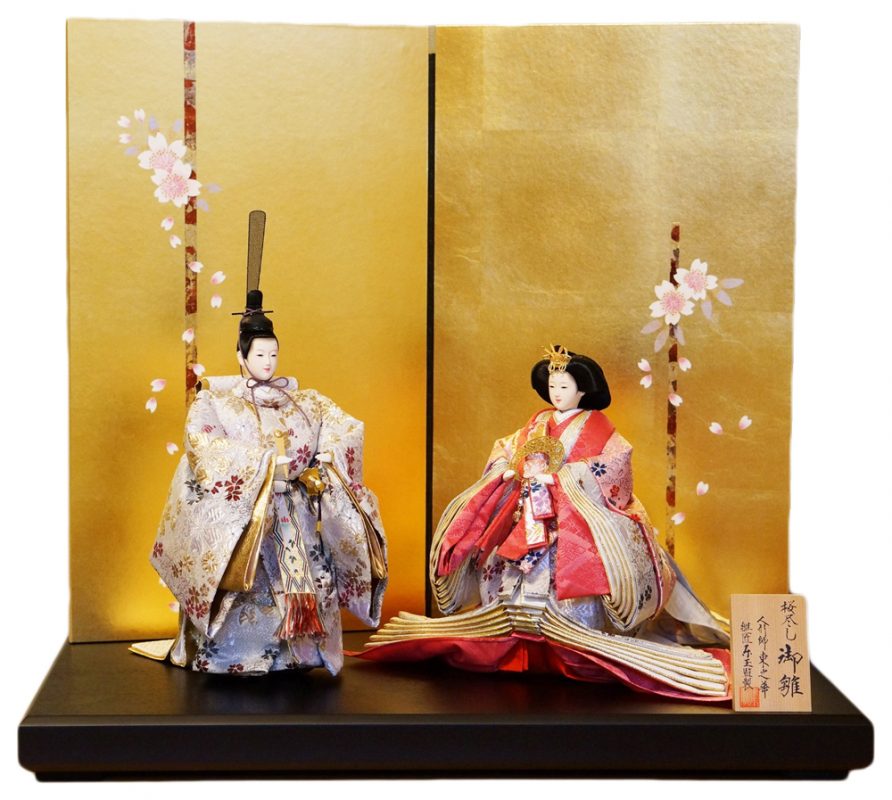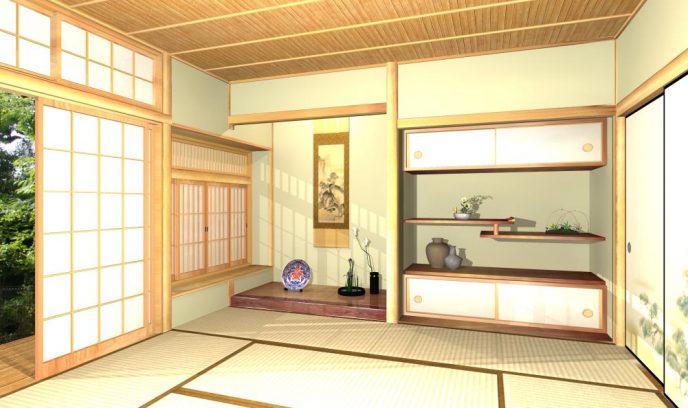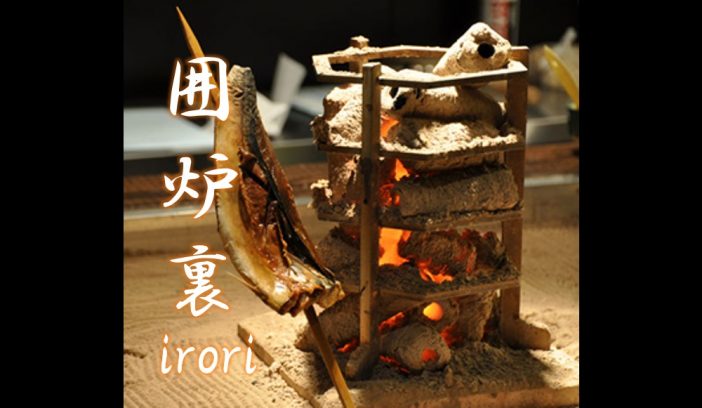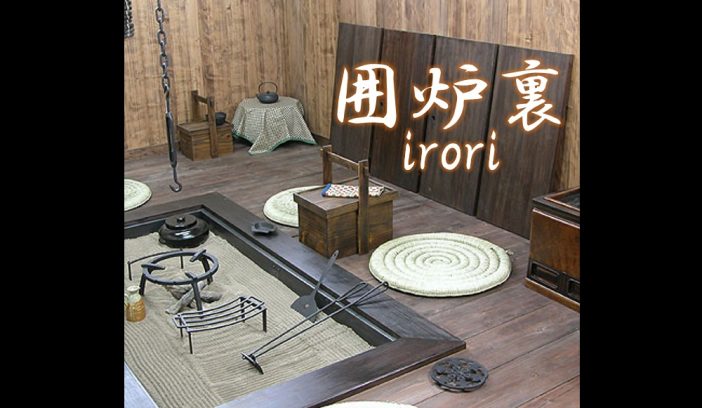The Japanese Home
Introducing unique architectural features and designs
influenced by Japanese culture.
Hinamatsuri Day – Japanese Doll Festival
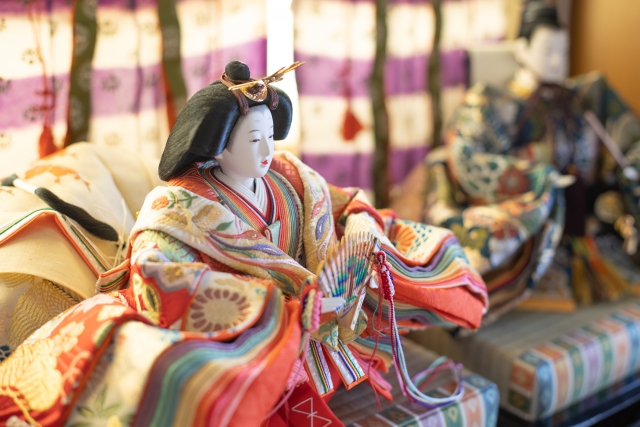
March 1. 2022
March 3rd is the Hinamatsuri Day in Japan.
It’s just the season when peach blossoms bloom, and it’s also called ‘Peach Festival.’
This Japanese traditional event that wishes for the growth and health of girls, is succeed for a long time in Japan, along with Hina dolls.
Celebration of Hinamatsuri
In Japan, there are two children’s celebration day in Japan. One is Boy’s Day, which also known as Chidren’s Day (May 5), and the others is Girls’Day (March 3). Both are celebrated with traditional decorations.
“Hinamatsuri” on March 3 is a Girl’s day.
The family which welcomed a new born girl prepares a set of doll called “Hina dolls” for her the first “Hinamatsuri” day.
“Hina dolls” are usually displayed for about a month from early February to early March in thier house every year.
It is traditionally belived that it is better to clean up as soon as Hinamatsuri is over.
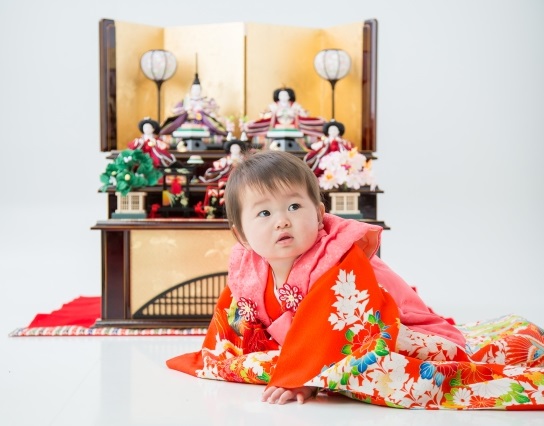
Up to what age the girl becomes, the family decorates “Hina dolls” to celebrate the Girl’s day? There is no rule.
Hina dolls are decorated by the family to wish their girl’s growth and happiness.
There are many families that stop decorating at a turning point of life, such as graduation, coming of age ceremony, and marriage, but there is no problem to keep decorating Hina dolls as long as they would like.
Some girls bring Hina doll with her when they have their own house.
What is Hina dolls?
The roots of Hina dolls date back to the Heian period (AD794-1185).
In the Heian period, doll play called “Hiina (Hina) play” was popular among young girls of Japanese noble families.
Some study says that this custom is the prototype of Hina dolls
Hina doll decorations represent the wedding of nobles in the Heian period.
Traditionally dolls are displayed on a step shelf. The bride and groom are displayed in the top row, and court ladies and escorts continue as they become the lower row.
Five musicians “Goninbayashi” are livening up the happy wedding seats.
The most luxurious Hina doll decoration is called seven steps decoration which is also called the fifteen-person ornament since there are fifteen dolls in total.
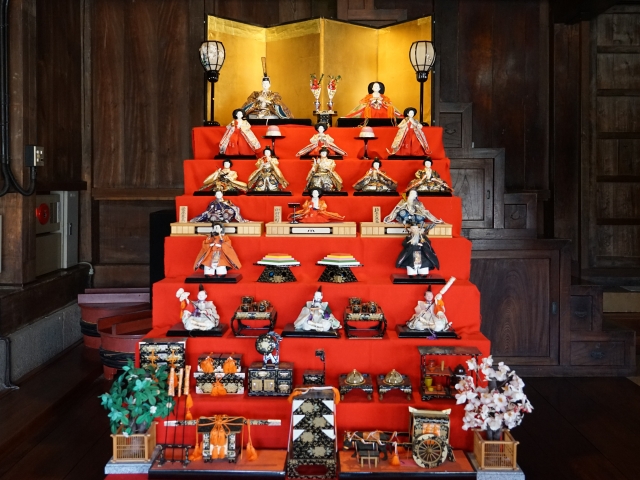
[Seven steps decoration]
Top row : the Obina (男雛, groom "male doll") and Mebina (女雛, bride "female doll")
Second row : three court ladies san-nin kanjo (三人官女)
Third row : five male musicians gonin bayashi (五人囃子)
Fourth row : two ministers
Fifth row : three helpers of the Emperor and Empress
Sixth row and bottom row : bridal kit such as cosmetic box, palace carriage, and palanquin, etc.
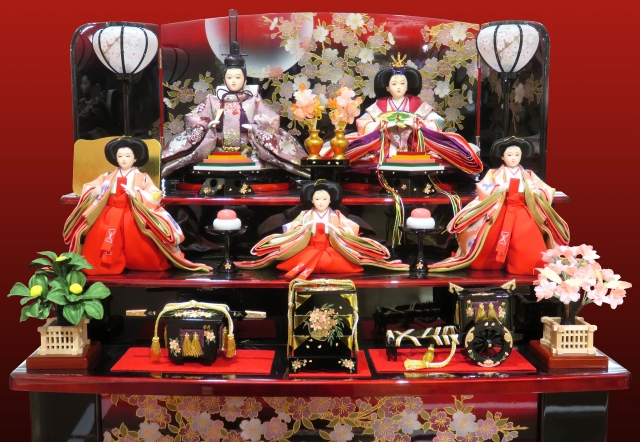
[Three-steps decoration]
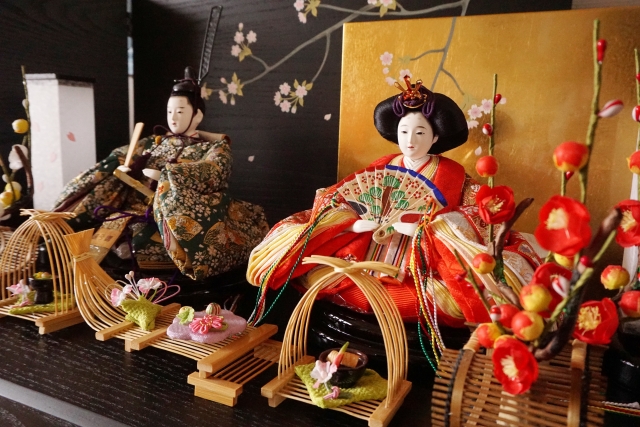
[Imperial couple decoration (Two Dolls)]
Just a wedding couple - Obina and Mebina
Types of Hina dolls
There are differences in how to display Obina (male) and Mebina (female) depending on the region.
Many of today’s Hina dolls are Kanto region style (called Kanto-hina), and are displayed with the Obina on the right and the Mebina on the left, following the Western custom of “male on the right and female on the left”.
In Kansai region (West Japan), the positions of men and women are sometimes reversed.
The display style in the Kansai region is based on an ancient Japanese custom.
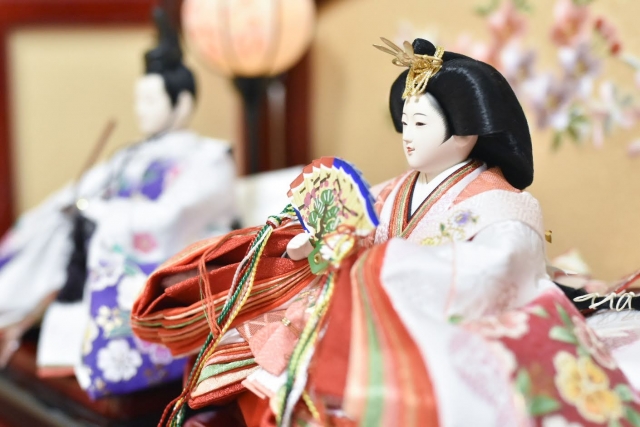
Kanto-hina
The facial features of dolls vary depending on the doll makers.
However, there is a tendency that Kansai region’s Hina doll (called Kyo-hina) have thin eyes and plain feature.
Kanto region’s Hina doll are more conspicuous.
Popular Hina dolls
Nowadays, “Imperial couple decoration” became popular since it is easy to display even in the limited space.
The price of a “Imperial couple decoration” is about 30,000 to 200,000 yen ($250-$1800).
You can also find various compact doll decorations and tabletop-sized mini-hina decorations.
When you visit Japan during the peach blossom season, Hina doll may be a good souvenir from Japan.
